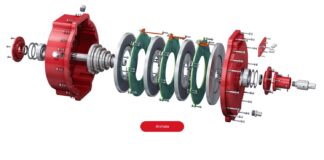The professor Rukmi Dutta and her team of the University of New South Wales, in Australia, have developed a new electric motor that works at high speed and uses less energy, which definitively means less pollution.
Rukmi has innovated and improved the existing IPMSM, which have different characteristics that make them highly performing electric motors, decreasing their environmental impact.
The integration of magnets inside the rotor generates more torque: the cylinder turns not only owing to the interaction between magnet and alternate current, but also because of the additional rotation caused by the rotor material’s resistance to the magnetic field, a property called “magnetic reluctance”. These machines can also operate at high speed without needing much power, which means that the smallest IPMSM can perform the same quantity of work as other bigger motor types. Besides, compactness is a key factor for the use in cars and aircrafts, where space and weight capacity are limited. The developed motor, not longer than a pen and with the diameter not bigger than a coffee cup, can reach 100,000 rpm and the nominal power is 5 kilowatts.









